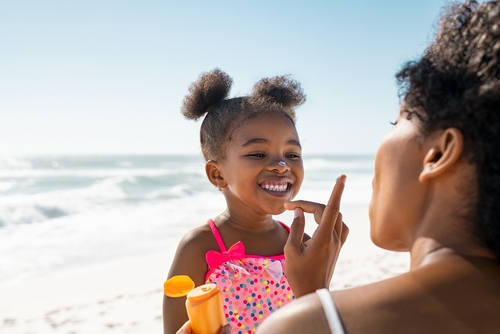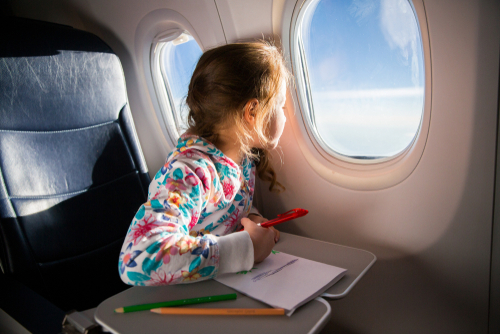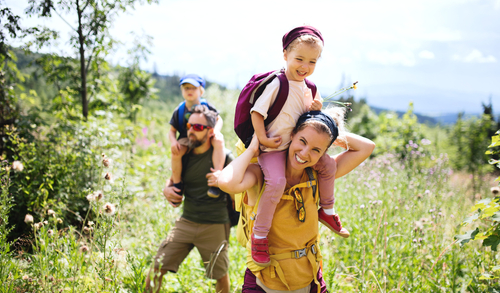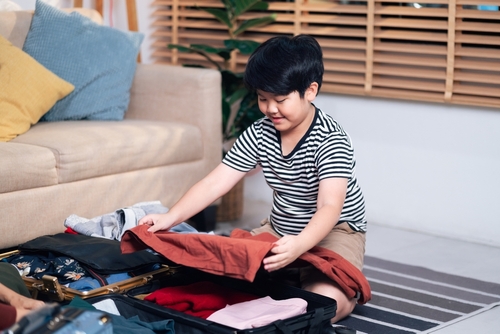By Dr. Marni Nagel, a pediatric psychologist at CHOC
Preparing kids for summer travel
Summer is near! Many families are preparing for the much-anticipated summer trip as the days grow longer, the weather warms, and the trees bloom with new leaves and flowers. While traveling to new places can excite many children, it can feel overwhelming, stressful, or even scary for some. If your child prefers the comfort of home and familiar environments, it’s important to prepare kids for summer travel to make the experience more enjoyable.
Whether you’re planning a long weekend or an extended trip, here are a few helpful tips to help your child feel prepared and comfortable in the new environment.
Tips to ease anxiety and build excitement
1. Involve your child in the preparations
Talk about your plans—where you’ll go, how long you’ll stay, what you’ll do, and what to bring. Discuss the weather (whether it will be warm like summer or cold like winter) and who will join you. Show your child pictures or videos of the destination, activities, and people who’ll be there. If possible, allow your child to choose a special activity or two they’re interested in for the trip. This involvement helps them feel in control and more comfortable.

2. Create a packing list together
A few days before, show your child a calendar and mark the days you’ll be away. Use the itinerary to create a packing list for all activities. Your child may want to add things to the packing list that you think are not essential. If you are tight on space, it might be helpful to make an additional packing list (in writing or with pictures for young children) that has your child’s extra items. Then encourage your child to pick a couple of items from the extra list. Involve your child in packing by having them grab items from the list or check off packed items.
3. Bring a comfort object
Bring a special pillow, stuffed animal, or comfort object to help your child feel secure in a new place. If staying overnight away from home, whether with family, friends, or in a hotel, a small nightlight can make them feel more at ease. Stick to familiar bedtime routines, such as bathing, putting on pajamas, brushing teeth, and reading a book. If you’re sleeping in a different space, make sure your child knows their room and where to find you.

4. Prepare your child for what to expect during travel
If you travel by plane, describe what will happen when you arrive at the airport, including checking bags, retrieving them, going through security, waiting at the gate, boarding, and deplaning. If traveling by car, discuss how long the car ride may take and where you anticipate stopping along the way. The American Academy of Pediatrics recommends stopping every 2 hours to take a break. Bring essential travel safety items like car seats and never leave a child unattended in a car.
5. Plan activities that will entertain your child if movement is limited during your travels
Yes, electronic devices can be very helpful during these times, as they often keep kids entertained for long periods. However, it’s important to break up screen time with other activities like coloring, reading, card games, and puzzle books. Avoid activities with small pieces that are easily lost or that can lead to sticky hands.

6. Remember to pack snacks and drinks
If your child is an anxious traveler, being hungry can make those feelings appear stronger. Having a favorite snack can help them feel more at ease. If your child has dietary restrictions, ask about food options in advance to determine if you need to bring additional food items with you.
7. Expect the unexpected
Sometimes, when traveling, you may experience delays or changes to plans. Be prepared for the possible twists and turns that might arise by having a back-up plan. It can be helpful to model for children that pleasant surprises and meaningful moments occur when we end up deviating from the original plan. If an attraction is closed or an activity is cancelled because of the weather, have Plan B as an alternative. Model flexibility and finding excitement in choosing a different path for your child. Also, remember that traveling as a group can take more time than traveling on your own. Build in extra time to avoid unnecessary stress.

8. Stick to daily eating and sleeping schedules as much as possible
Working with a sleep-deprived, hungry person can be challenging. Young children need routines and structure to help make their worlds predictable and secure. While on vacation, special events may occur outside typical schedules. Sticking to an adequate sleep schedule and having predictable meals and snacks will make the trip more enjoyable for everyone.
9. Avoid overscheduling
Sometimes we want to make the most of our vacation time and want to be sure to pack in as much as possible. It is helpful to remember that vacations are also for slowing down and taking it easy. Sometimes children will need a day of downtime as opposed to being on the go most of the day. Setting time aside to rest and relax throughout your vacation can be helpful.

10. Leave room for new experiences
Some kids are naturally quite adventurous and ready to try something new without hesitation. Others are more cautious and afraid of the unknown. If your child leans towards the latter, vacations can be a great time to step outside their comfort zone. They can try something new, whether it’s a new activity, place to sleep, or food. Try to space the new experiences out throughout your vacation to reduce the risk of your child feeling overwhelmed. Also, consider having your child participate in new experiences that are not as scary first, as this can help with self-assurance. For additional tips on helping children manage anxiety, check out this handout.
11. Leave enough time to transition back to your typical routine at the end of your vacation
It might be tempting to extend your vacation, but taking a day or two after travel can be helpful. Use these transition days to unpack and reset routines. Adjust sleep schedules, especially after traveling through different time zones. Prepare for the upcoming week and ensure your child has time to complete homework. If there’s a school project related to the trip, this is the time to think about it and gather any necessary items.

Making the most of school breaks
School breaks are a wonderful time for families to bond, connect with others, and explore new surroundings. When traveling with children, taking the time to think through the itinerary and prepare can go a long way to making the trip even more enjoyable. Remembering to leave transition time before and after the trip is key and if you have extra time, you and your child can even start to think about your next trip!
Helpful resources
Tips for safe and stress-free family travel
Creating routines for love and learning
For additional considerations if traveling internationally, Traveling safely with infants and children





